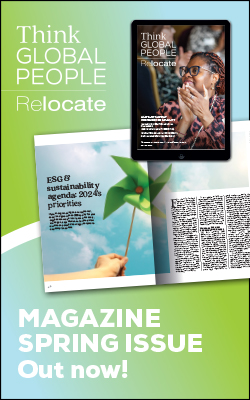Gender equality 4.0: From binary to balanced approaches
International Women’s Day 2017: Ruth Holmes asks Julia Howes, principal of strategic workforce planning and analytics at Mercer, how workplace trends, like automation, are likely to affect gender diversity.

Davos 2017
Reinforcing the issue’s importance, and the high-level support it is receiving, Mercer again launched its latest When Women Thrive findings at the World Economic Forum’s Davos summit.A key theme at the four-day conference, opened by the Chinese president, Xi Jinping, was the impact of job automation on the world’s workforce, and, by extension, the impact on diverse leadership and talent pipelines.Discussing the implications of the trend, Julia Howes, Mercer’s head of the strategic workforce planning, said technology’s increasingly transformative role could be a blessing and a curse when it comes to rebalancing leadership.“I think greater workplace automation presents a risk and an opportunity,’ says Julia Howes. “It is difficult to know where things are heading. But, on the risk side, while disruption from technology is unlikely to be uniform, the roles technology is replacing tend to be those where women’s participation is highest. For example, in office and administrative roles.“Also, the areas that see growth, for instance, the digital and science, technology, engineering and mathematics [STEM] sectors, are where female professional representation is quite low. It’s therefore an ongoing issue of how to get more graduate and professional women into STEM sectors.”Priming the pump – the talent pipeline
Last year, Mercer’s research showed that a key factor globally in moving more women into senior posts was representation in commercial, outward-facing roles. In the context of STEM-centred enterprises, the challenge of female representation is doubled.“Very often, involvement in these important professions is a stepping stone to leadership positions in these key sectors,” says Julia Howes. “If women aren’t involved at these middle and commercial levels, then the pipeline stops. The initial movement at the top could stall if we don’t move more women into STEM jobs.”This picture paints quite a bleak picture for the future of female representation in senior leadership. Yet, there is hope. “The opportunity comes with increasing female involvement in STEM/digital industries and roles. It then becomes about how we break down the stereotypes.“For example, there was a study about women in engineering, continues Julia Howes. “School-age young women were asked what they thought about engineering. They thought it was about engineering and getting dirty.“At this stage, girls often want to be in work that helps people, eg medicine. A lot of the challenge is changing perceptions that actually, digital services, engineering and mathematics are extremely helpful in our societies and these professions are involved in doing things better. Tech isn’t just people in hoodies working all hours in a dank basement eating McDonald’s!”Changing perceptions
This is where initiatives like Girls Who Code are helping to change attitudes and bring more young women into these growing professions.It is also about looking at the data and thinking in a more informed way about how the technology sector itself is changing, proposes Julia Howes.“We seem to think of the issue of automation and technology in a very binary way. Actually, STEM sectors are very analytical, which is why they are being automated.“Some of the real value comes from applying it in very creative, flexible and innovative ways. These are key skills in making digital leaps work, and very often these are skills that women have been shown to have.“So, really, there are two opportunities. The first is to educate people about how important creativity and innovation are to STEM subjects. The second is to reflect that in reward packages.”Re-evaluating skills and their value?
At the end of last year’s When Women Thrive webinar, Mercer’s When Women Thrive research lead Patricia Milligan made a tantalising point about current disruptive trends being an opportunity to reframe pay and reward to reflect demographic trends and the new world of work.“As the future of work hits us, the skills that have been traditionally valued will be less so as automation takes hold,” continues Julia Howes on this very theme. “At the moment, the characteristics of creativity and innovation aren’t valued as much and therefore are not paid as well. That shift may occur as innovation becomes more valued.”However, it is encouraging for now that the latest pay data for the UK shows the gender pay gap narrowing significantly for people early in their career. Flexible working is also becoming more commonplace for senior and people at upper salary levels.“When people come into the workforce as graduates and apprenticeships, they are equal,” notes Julia Howes. “The balance in pay and progression shifts when women start families and this doesn’t surprise me from a pay and progression point of view.“This is why it is so important for managers and men to be involved in the issue. When men become more involved in caring and society accepts this is when I believe there will be a bigger shift in the middle. Until flexibility is an issue for everyone, this social change won’t happen.”Flexibility and representation
This spring sees the UK’s largest companies publish their gender pay analysis. Asked what we can expect to see on this issue, Julia Howes says: “What we tend to find is that any gap is less and less about bias, for example similar people doing similar jobs, but more about who does what in an organisation,” explains Julia Howes. “Companies have enough structure to ensure bias is minimised or removed. The issue for gender pay among our clients is one of representation.“In our experience, lots of companies are trying to embrace the benefits of flexible working, for example. What’s interesting for us is where and how flexibility is being created. At mid-career, often where people start families, there is a lot of guilt associated with flexible working. How do we break down the assumptions and how do we change the way we do things?“I think we will need to see three types of change here going forward in the expectations of employers, women, and of people with caring responsibilities, whether it’s for children or parents.”Read more from Relocate on women, diversity and inclusion and global mobility:
- International Women’s Day 2017: How to “Be Bold for Change”
- Britain trails in league of female start-ups
- Job-sharing hits new heights: study
Releasing the squeezed middle
Data suggests that any progress being made on flexibility and representation is sector-specific and mostly happening in larger companies. Possibly thanks to government initiatives and consultations with employers in certain sectors, such as those most represented in the FTSE100, like financial services and technology, there has been a definite focus on the top, and with positive results.“Yet my concern is there seems to be an overemphasis on senior leadership and less on ensuring a strong and equal internal pipeline in companies in the sector to the top levels for women,” says Julia Howes. “Until there is this, I am concerned about progress going forward.“In the financial services sector, there is a high termination rate at the top. There just aren’t enough women with the right skills and experience to continue to make progress. It will be a roller coaster until this happens.“Talking to clients, it’s not because women are turning their backs on senior leadership roles because of culture or pay. It’s because there is such a shortage of women with these skills in such a heavily regulated sector. Appointments have to be approved by the regulator. The industry is very focused on getting this right, but a focus on the top has created a very hot market for individuals.”Mobility’s role
At Mercer, the question is very much how to engage women in middle and encourage women at the early stages of their careers.“We are concerned about how women in the middle can accelerate their careers,” says Julia Howes. “For some companies, that is a business move or an international move. From a gender profile point of view, these opportunities are still very much skewed to men. These are the steps men seem to take to add the variety of experience they need to their CV and to progress to the top of organisations.”How then can mobility professionals play their part in building a robust and gender diverse talent pipeline?“Apart from management training and involvement, I would say that at middle levels and beyond, coaching and sponsorship are very important. At junior levels, it’s less important. Career advancement is more about performance and tenure. But beyond that, you really do need coaching and sponsorship.“In terms of how to get everybody to engage, I know I am biased, but it really is by looking at the data. When Women Thrive is like putting up a mirror and it makes people realise the extent of the issue.“Training for managers in isolation is good. But what really makes the difference is using data to reflect what is going on in organisations.“Here at every board meeting our directors, as part of the standard dashboard of data, look at our female representation and diversity data. It takes the emotion out of the issue and they can see in aggregate what is happening in the business.Facts into action
“Gender equality is a very emotive subject, particularly around internal promotions. It’s very sensitive, but with the data, we can all see very quickly and take rational decisions based on the data,” continues Julia Howes.“Progressive organisations are going further and recognising as part of the wider piece around individualised and tailored approaches to pay, reward and recruitment, employer brand and engagement, that women have unique health and financial wellbeing needs.“These are now being brought to the fore with companies offering more tailored programmes that are agile and accelerate women’s progress through the pipeline.”The theme of 2017’s International Women’s Day is Be Bold For Change for a more gender inclusive world. With the data and insights now available to us, we all clearly have the information and facts to deliver those bold changes.For related news and features, visit our HR section.Access hundreds of global services and suppliers in our Online Directory Get access to our free Global Mobility Toolkit
Get access to our free Global Mobility Toolkit 
©2024 Re:locate magazine, published by Profile Locations, Spray Hill, Hastings Road, Lamberhurst, Kent TN3 8JB. All rights reserved. This publication (or any part thereof) may not be reproduced in any form without the prior written permission of Profile Locations. Profile Locations accepts no liability for the accuracy of the contents or any opinions expressed herein.




























